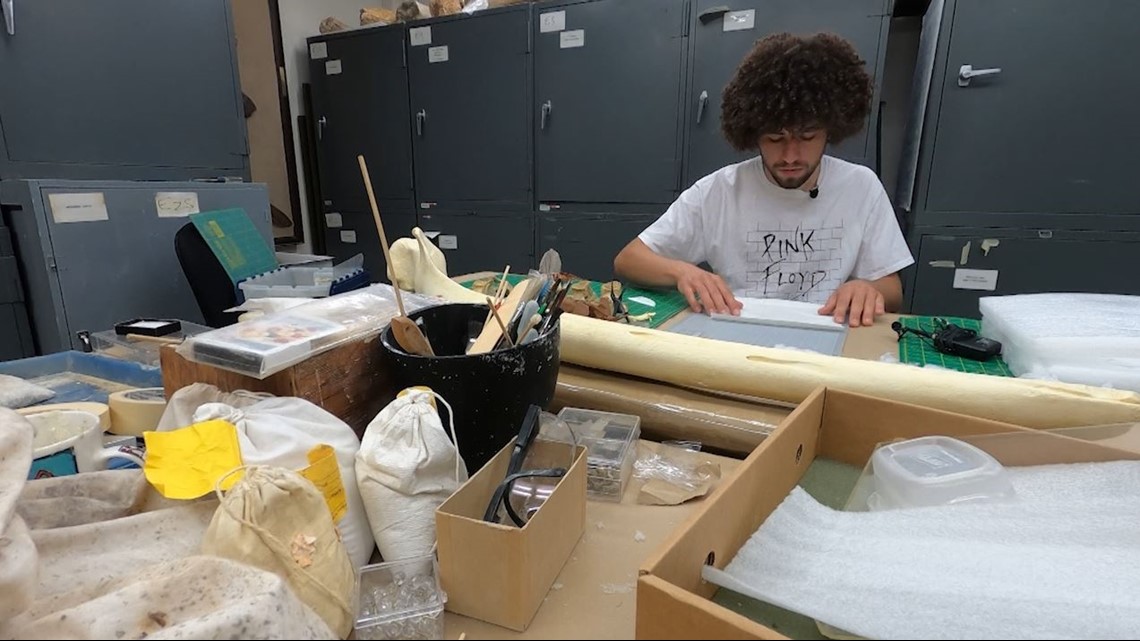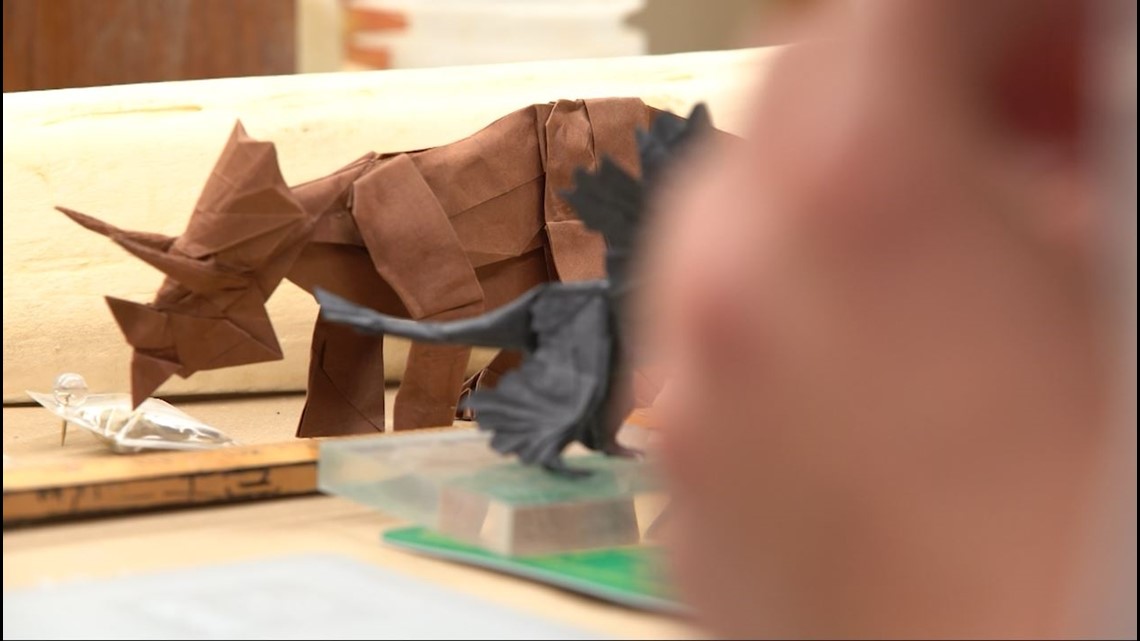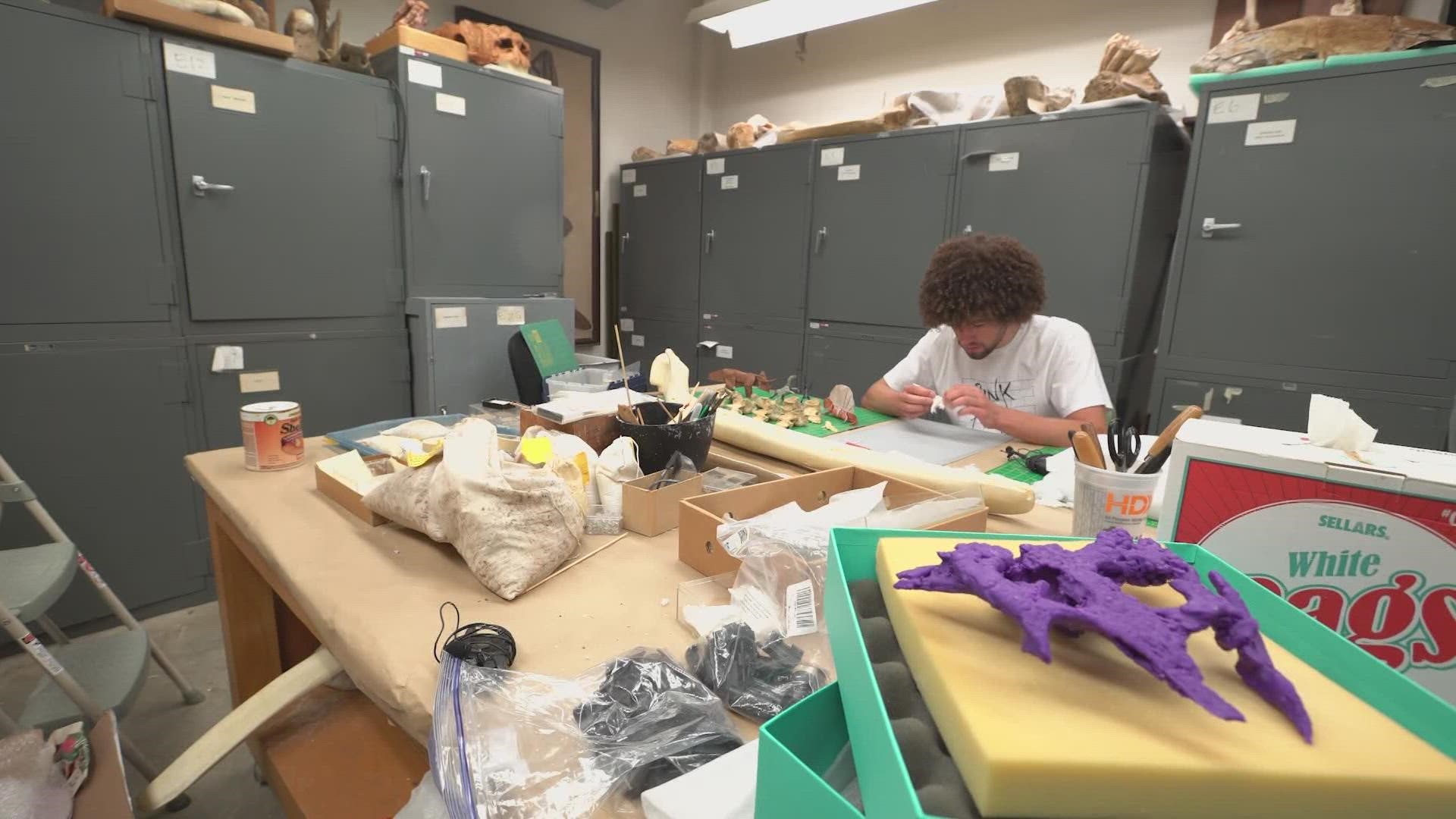DALLAS — To build a successful career in paleontology, you need a passion for fossils, geology and physiology. And, if you're SMU student Travis Nolan, you bring the secret weapon of origami to the table, too.
"Being surrounded by bones and fossils and natural history is always just kind of fun for me," the SMU junior said while working at the Shuler Museum of Paleontology in the basement of Heroy Hall. The storage and research area is filled with bones and fossils from digs and expeditions around the world.
But on this particular morning, we also found Travis intricately creasing and folding pieces of paper.
"It's a 22.5 degree design," he said of the origami project. "It's a very iterative process for sure," he said of the trial and error that comes with his hobby.
As early as the age of five, he says, he knew who he wanted to be.
"I came downstairs in the kitchen and said 'Mom, Dad I got it figured out!"
He loved dinosaurs. He wanted to be a paleontologist. But what to do with his other passion: all that folding and folding of paper. He loved origami, which he admits people often think is just the endless creation of paper crane after paper crane.


"Exactly. They're like wow, that's pretty lame you know," he said with a laugh.
Lame? His work definitely is not.
"I've got a nice little dromaeosaur design," he said while putting the finishing touches on his latest origami piece.
From one piece of paper he can make dromaeosaurs, velociraptors, triceratops and more. It's called paleo artistry.
"Professionally creating art to convey paleontological information to the public," he said.
But before you dismiss his hobby, as his own grandfather once did, Travis says consider the worldly applications of his hobby.


"You're spending so much time folding paper, why?" he remembers his grandfather asking him.
Well, it can be rocket science after all.
"There's research into material science applications for origami," he said.
The recently launched James Webb telescope for example. Someone had to figure out how to fold it up for launch and then unfold it again.
"To be easily deployable in space. That's origami."
And working with the Dallas non-profit Paper for Water, he has sold enough of his origami ornaments to help build water wells in places like Kenya.
"It hit me when I saw the pictures of the finished well. It was an absolutely mind-blowing experience, yeah," he said.


So, if you see a young man, studiously folding a single piece of paper, it might not be just a passing hobby. It could be a college junior majoring in earth sciences specializing in geology with minors in biology and applied physiology...while building a budding paleontology career one intricate fold at a time.
"Like, I'm looking at paleontological bio-mechanics, right? Studying how these animals moved and walked and diving into their anatomy."
"If I'm stuck on a bus for, like, four hours, I can bring a sheet of paper and be occupied the entire time," he said.

